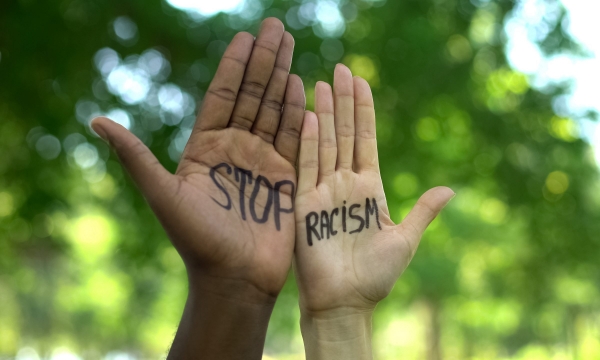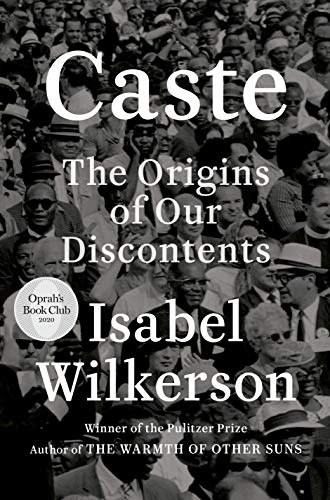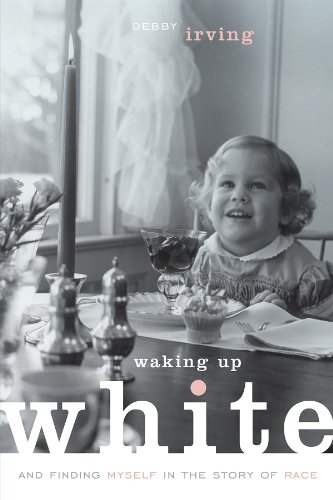Becoming Beloved Community: Understanding Systemic Racism Resources

Session One: March 6
In the first session, Tom and Ivy welcome students to the class, offer an overview of what the class will cover, and offer context for the course. In particular, they discuss the importance of engaging Becoming Beloved Community and what that means in the context of this course. They also define some key terms that they will be using in the course.
Some themes and ideas covered in this session:
- Why learn about systemic racism?
- Bishop Curry's call for the Episcopal Church to build a community that resists racism.
- Becoming Beloved Community -- what it means and how this course fits into that project.
- The six blocks of material that make up this course and what they cover.
- Some key terms for this conversation and how this course uses them.
The slides used in this session and some resources to learn more about individual topics are attached below.
Session Two: March 13

Looking beneath the history of one's country is like learning that alcoholism or depression runs in one's family or that suicide has occurred more often than might be usual...You don't ball up in a corner in shame at these discoveries. You don't, if you are wise, forbid any mention of them. In fact, you do the opposite. You educate yourself. You talk to people who have been through it and to specialists who have researched it. You learn the consequences and obstacles the options and treatment. You may pray over it and meditate over it. Then you take precautions to protect yourself and succeeding generations and work to ensure these things, whatever they are, don't happen again.
--Isabel Wilkerson, Caste: The Origins of our Discontents (2020)
As a nation, we must correctly diagnose the problem of systemic racism before we can begin treating it. Like a person who goes to the doctor and discovers the symptoms they have experienced are based in a serious problem, white people, who have felt the effects of systemic racism least directly, are often distressed to find this disease in a nation that seemed, from the white perspective, to be relatively healthy. They may resist or deny the reality of the diagnosis. But if Americans want the U.S. to be the nation many white people have always thought it was -- the land of equal opportunity that most Americans truly want -- all U.S. citizens need to look without blinders at the problem keeping us from achieving this reality.
The purpose of looking into our history this way is not to assign blame or induce guilt -- it is to figure out where there are diseases so we can take the appropriate steps to heal.
In this lesson, Ivy talks about some of the structural flaws in our nation that have contributed to the issues we are dealing with today. This course's time limits prevent an in-depth discussion of U.S. history and race, of course, so instead, in this session and in session three, Ivy talks about examples of injustice in U.S. history that have led to the problems we face today. Here and at the end of the course, the course also offers suggestions for resources to learn more about race and U.S. history.
The slides used in this session and some resources to learn more about individual topics are attached below.
Session Three: March 27
 As my understanding of America's racial history broadened, isolated bits of disconnected data found their logical place in a tapestry carefully woven over time. The dilapidated and isolated inner-city neighborhood, the phone call that landed me my first job, the diversity initiatives that fell short, the way my white students consistently rose to the top, my mixed feelings about affirmative action, friendships with people of color that felt stilted -- suddenly, they all became united in a single narrative... Racism wasn't about this person or that, this upset or that, this community or that; racism is, and always has been, the way America has sorted and ranked its people in a bitterly divisive, humanity-robbing system.
As my understanding of America's racial history broadened, isolated bits of disconnected data found their logical place in a tapestry carefully woven over time. The dilapidated and isolated inner-city neighborhood, the phone call that landed me my first job, the diversity initiatives that fell short, the way my white students consistently rose to the top, my mixed feelings about affirmative action, friendships with people of color that felt stilted -- suddenly, they all became united in a single narrative... Racism wasn't about this person or that, this upset or that, this community or that; racism is, and always has been, the way America has sorted and ranked its people in a bitterly divisive, humanity-robbing system.
-- Debbie Irving, Waking Up White (2013)
In this session, Ivy talked about racial history in the U.S. since 1924 and how racial decisions were deliberately implemented to establish white advantages over people of color. She shows how these decisions have led to the racial inequalities we see today.
Some topics she addressed:
- The Bogardus social distancing scale.
- The G.I. Bill and its racist implementation.
- The housing discrimination faced by people of color after World War II.
- Specific incidents in the Civil Rights Movement that show why it was so needed at that time.
- The Black Lives Matter movement's importance today.
- How racism has made people of color more vulnerable to Covid-19.
- In-depth discussion of resources through which people can learn more about the racial history of various periods in American history.
- People of color in the U.S. as colonized minorities.
The slides used in this session and some resources to learn more about individual topics are attached below
